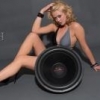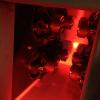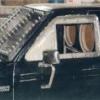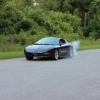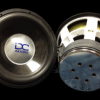Leaderboard
Popular Content
Showing content with the highest reputation on 05/07/13 in all areas
-
2 points
-
1 point
-
Dont know to much about it, my buddy got it in a trade. He was told its a custom sub, 2k rms, its a dual 1, and this thing is a spl sub not doubt. It kills everything in my explorer. No sound quality at all. But its just a temporary setup untill i can get my vvxs. So i dont mind.1 point
-
why are these amps rated so high at 14.4v when most daily vehicles are ran at 13v ?1 point
-
Go to the link in the first post, scroll down to the power junkies category and look for the 20k window shake vid.1 point
-
Alrighty time for some catch up pictures. At the beginning of this build i had a Alpine 125bt, that has now been swapped out for a Pioneer deh 6400bt. Here is the volt meter I installed. I know its a cheap one, but it does what I need it to do, and fits perfectly in the dash. That is the voltage after I just shut the car off. Dont worry! And I never showed pictures of my back speakers, partly because they are horible but I figured I better include everything. They are the stock speakers out of my camper trailer, but they sound better (dont sound good, but better than what i had) than the factory speakers that were torn apart and no surround. And here is how i conceal my system in parking lots around town, as my buddy says, "outa sight, outa mind."1 point
-
Going to run for SOTM guys! vote for me? please! I could really use a 85.4, this sub alone is drowning out the highs, i cant imagine what its going to sound like when i get two vvxs!1 point
-
too many justin with white blazers1 point
-
heres some pictures of the setup that in right now. Got the cops called on me yesturday. I got a "disturbing the peace" warning at 1 o'clock in the after noon from some old dude that lives 2 blocks away. So now Im on a 24 hour probation, cops get another call i get fined! im happy and mad at the same time! ahahaha1 point
-
1 point
-
WHAT THE FUCK? lvl 5 12 for a center console sub? I LIKE IT1 point
-
Source: http://svconline.com/proav/coil_understanding-thiele-small-parameters/ Understanding Thiele-Small Parameters The Thiele-Small (T-S) parameters are commonly used by engineers to define the relationship between a speaker and a particular enclosure. But they can also provide some measures describing loudspeaker components that defy marketing interpretation. The Thiele-Small (T-S) parameters are commonly used by engineers to define the relationship between a speaker and a particular enclosure. But they can also provide some measures describing loudspeaker components that defy marketing interpretation. Here are some of the more useful T-S parameters and what they mean: Fs: The free-air resonant frequency of a speaker. In general, a lower Fs indicates a woofer that would be better for low-frequency reproduction than a woofer with a higher Fs. Re: The DC resistance of the driver measured with an ohm meter. This measurement will almost always be less than the driver's nominal impedance. Le: The voice coil inductance measured in millihenries (mH). The industry standard is to measure inductance at 1kHz. As frequencies get higher there will be a rise in impedance above Re because the voice coil is acting as an inductor. Thus, the impedance of a speaker is not a fixed resistance, but changes as the input frequency changes. Maximum impedance (Zmax) occurs at Fs. Q parameters: Measurements related to the control of a transducer's suspension when it reaches the resonant frequency (Fs). The suspension must prevent any lateral motion that might allow the voice coil and pole to touch (damaging the loudspeaker). Qms is a measurement of the control from the speaker's mechanical suspension system (the surround and spider). Qes is a measurement of the control from the speaker's electrical suspension system (the voice coil and magnet). Qts is the “Total Q” of the driver. In general, Qts of 0.4 or below indicates a transducer well-suited to a vented enclosure. Qts between 0.4 and 0.7 indicates suitability for a sealed enclosure. Qts of 0.7 or above indicates suitability for free-air or infinite baffle applications. Cms: The “compliance” of the suspension in a particular speaker. Cms is a measurement of its stiffness measured in meters per Newton. Vd: The Peak Diaphragm Displacement Volume, or the volume of air the cone will move. It is calculated by multiplying Xmax (voice coil overhang of the driver) by Sd (surface area of the cone). Vd is noted in cc. The highest Vd figure is desirable for a sub-bass transducer. BL: Expressed in Tesla meters, this is a measurement of the motor strength of a speaker. Think of this as how good a weightlifter the transducer is. The formula is mass in grams divided by the current in amperes. A high BL figure indicates a very strong transducer that moves the cone with authority. Mms: The combination of the weight of the cone assembly plus the “driver radiation mass load.” The weight of the cone assembly is easy: it's just the sum of the weight of the cone assembly components. The driver radiation mass load is the weight of the air (the amount calculated in Vd) that the cone will have to push. Xmax/Xlim: Short for Maximum Linear Excursion. Speaker output becomes nonlinear when the voice coil begins to leave the magnetic gap. Although suspensions can create nonlinearity in output, the point at which the number of turns in the gap (see BL) begins to decrease is when distortion starts to increase. Sd: This is the actual surface area of the cone, normally given in square cm.1 point

